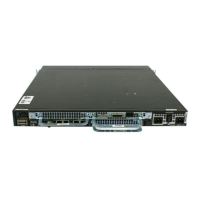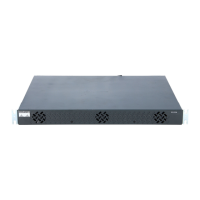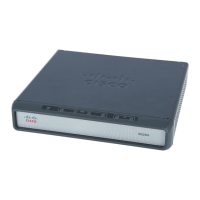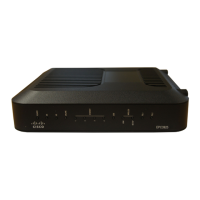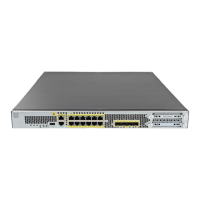5-6
Cisco AS5350 and Cisco AS5400 Universal Gateway Software Configuration Guide
OL-3418-02 B0
Chapter5 Managing and Troubleshooting the UniversalPort Card
Managing SPEs
Port Configuration Mode Commands
The following commands are available in port configuration mode:
• busyout card/port—Gracefully disables a port or all ports on a trunk card by waiting for the active
services on the specified port to terminate. You can busy out all ports or just one port on a card—for
example, busyout 1 specifies all ports on card 1; busyout 1/4 specifies just port 4 on card 1. Use the
no form of this command to re-enable the ports. This replaces the modem busyout command.
Maintenance activities such as testing can still be performed while a port is in busyout mode.
Note port busyout and spe busyout are different commands, and do not affect one another. If you
busyout a port or spe with one command, you can clear it only with the analogous clear
command.
• shutdown—Clears active calls on the port. No more calls can be placed on the port. The state of the
SPEs are reflected in the show spe command display. Use the no form of this command to re-enable
the ports. This command replaces the modem shutdown command.
Note When a port is in busyout mode or shutdown mode, the state of the SPE is changed to the consolidated
states of all the underlying ports on that SPE.
Managing SPEs
This section describes how to manage SPEs by setting the SPE country code, entering SPE configuration
mode, upgrading the SPE firmware, performing busyout on SPEs, and clearing active calls on the SPEs.
SPE Country
On the Cisco AS5350 and Cisco AS5400, DS-0 companding law selection is configured for the entire
system rather than on individual voice ports.
To configure companding on your CT1/CE1/CT3 controller lines, you must use the spe country
command in global configuration mode. (This command replaces the modem country command. If you
do not specify a country, your controller line uses the default.
For T1 interfaces, the default is t1-default (Mu-Law); for E1 interfaces, the default is
e1-default (A-Law). Use the no form of this command to set the country code to the default.
Supported countries include, but are not limited to, those shown in Table 5-1:
Table 5-1 Supported Countries and Corresponding Companding Law
Country Companding Law Country Companding Law
Australia A-Law Netherlands A-Law
Austria A-Law New Zealand A-Law
Belgium A-Law Norway A-Law
China A-Law Poland A-Law
Cyprus A-Law Portugal A-Law

